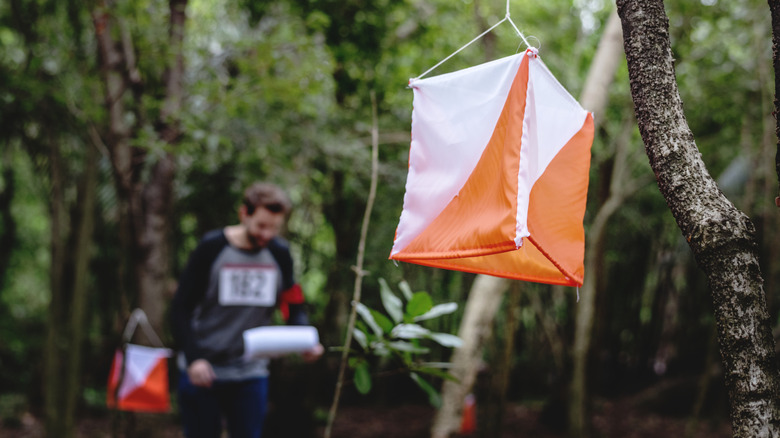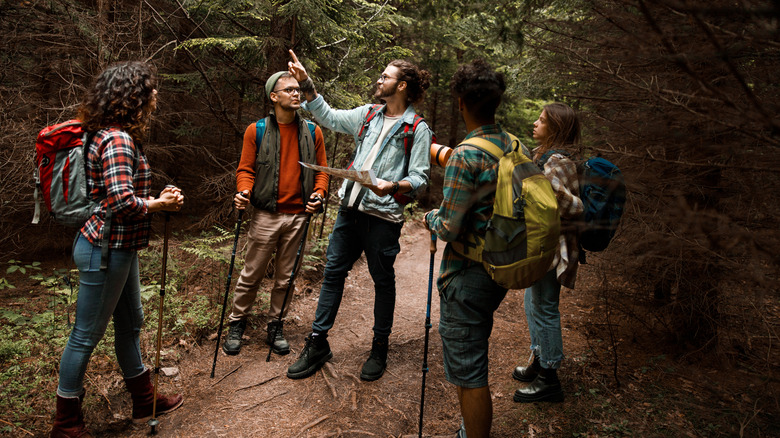The Low-Tech Scandinavian Adventure Sport Taking Off In America's National Parks Is Fun And Beginner-Friendly
A Scandinavian sport is gaining traction in the U.S. and is pulling people off the screen. Orienteering, an adventure sport that blends hiking and map reading, first took off in Sweden in the late 19th century as a military training exercise and evolved into a competitive sport by the early 1900s. Today, even schoolchildren can learn how to navigate with a compass and a topographic map.
At its core, orienteering is simple: participants use a detailed map and compass to find a series of checkpoints, known as "controls," spread out across varied terrain. These are placed by local orienteering clubs or event organizers. These organizations, often affiliated with Orienteering USA (the sport's national governing body), design the courses and create the detailed topographic maps.
Imagine you're handed a topographic map and a simple compass at Shenandoah National Park. At the sound of the whistle, you head into the woods. Your mission is to find ten checkpoints hidden throughout the forest, each marked on your map but not visible from the trails. You can do so on foot, by mountain bike, or by skiing. Once you find a control, you punch your scorecard or electronic sensor to mark your visit and move on. The route between points is up to you. Some people race through, competing for the fastest time. Others take their time and enjoy a scenic forest walk. By the time you reach the final marker, you've sharpened your sense of direction.
Where can I practice orienteering?
One of the key appeals of orienteering is how accessible it is. First-timers can stick to beginner-friendly areas with clear paths, while more experienced navigators can venture into denser wilderness on longer routes. This is why many national and state parks in America, like Catoctin Mountain Park in Maryland and Prince William Forest Park in Virginia, are starting to integrate permanent orienteering courses for all levels of expertise into their programming. Park staff often work with orienteering clubs to install durable markers that remain in place year-round. These permanent courses are self-guided and open to the public, so visitors can have the chance to practice orienteering on their own schedule and at their own pace.
Let's face it: We're losing our sense of direction by depending on our phones' GPS. A 2019 study (via Independent) found that one in five millennials wish they were better at reading maps. Also, who hasn't experienced their battery dying at an urgent moment, or Google Maps failing us? Paper maps can be an essential backup. And unlike high-cost adventure sports, orienteering requires almost no gear besides a map and a compass.
So, if you're an experienced hiker looking for an entirely new way to hit the trails, or just want to improve your map skills, orienteering may be for you. There's an orienteering club in nearly every state in the U.S., and you can find your closest one at Orienteering USA. If you're fast enough, maybe you'll be able to compete! In summer 2025, the European Youth Orienteering Championships (EYOC) will be hosted in Brno, Czech Republic.

